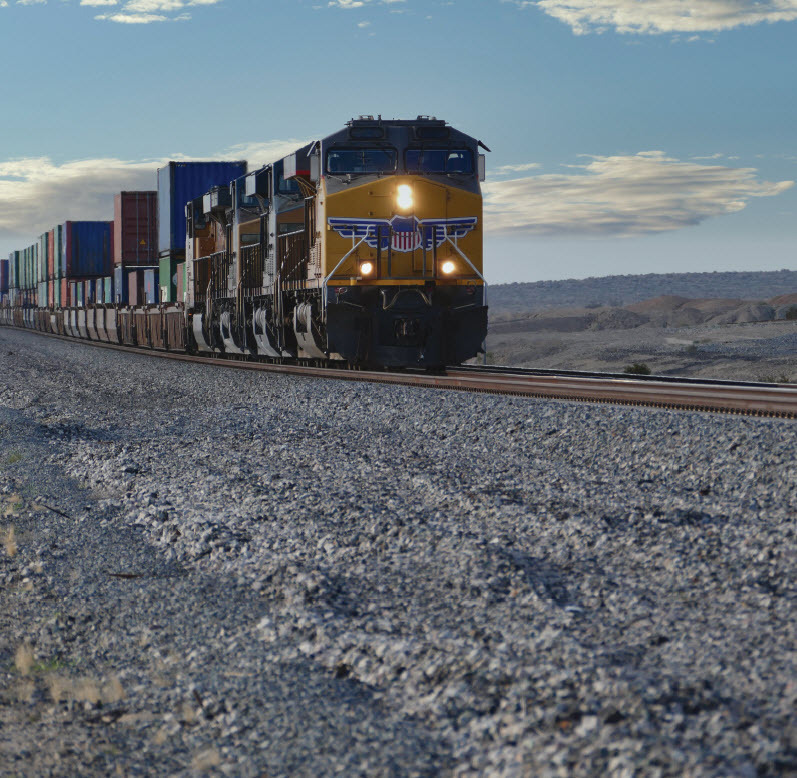
Freight Policy
By Diane Calabrese/ Published February 2024

One can say it isn’t so, but it’s a fact. Increases in delivery charges, surcharges, special local charges on deliveries, and surcharges on top of surcharges kept accumulating in 2023, following a trend line that began even earlier. Changes in the cost of moving goods now occur so frequently they can upend the best business plan.
Members of our industry—and all industries—confront a confounding array of challenges. These are challenges that must be met and balanced.
There are customer expectations, regulations, and logistics like dimensions of packages, which are ever present. Now, there is also a great deal of unpredictability in cost from one month to the next.
Fortitude is where the approach to a workable freight policy begins. Communication is how it continues.
Regardless of whether the economy is placid or perturbed, reappraisal of freight policy is a must. “It’s time-consuming, but it’s literally looking at sales growth in specific lanes and having personal conversations with customers to understand their situation and see if a viable solution exists for both parties to be successful,” says Mike Gruver, the general manager at Hydrus Detergents in Estherville, IA.
The assessment and discussion should be done with context. Anyone shipping goods as a routine part of business must understand the network of carriers and realize that carriers function in different ways.
“Understanding your order sizes (number of pallets) across the variety of lanes you ship and service in the U.S. and Canada, versus customer threshold for the level of cost they will incur to choose you over a more regional supplier, is essential,” explains Gruver. It ensures that bottom-line-promoting solutions to moving goods can be found.
What’s a good choice in one state may be a bad one in another. Companies that operate with satellite locations in many states must navigate a spectrum of constraints and choices, which get more attention below.
There is, of course, the big umbrella under which all shippers operate: federal regulations. For example, the Federal Highway Administration (FHWA), which is part of the Department of Transportation (DOT), oversees the commercial vehicle size and weight program.
States can set their own weight standards for roads that are not part of the interstate system. But on interstates, weight restrictions (except in times of crisis, when they have been relaxed) are 20,000 pounds for single axle, 34,000 pounds for tandem axle, and 80,000 pounds for gross vehicle weight.
Concerns of the FHWA encompass roads and bridges. For bridges, there are formulas for weight that take into account both the integrity of the overpass and the way the load of a truck is distributed across its axles. The short of it is that many bridges have lower maximum weight designations for crossers.
What about length, width, and height restrictions on commercial vehicles? It gets really tricky. The federal government does not impose them, but if an individual state imposes certain restrictions that deviate from federal parameters, the state can lose some of its apportionment from federal highway funds.
Transport companies—and not just those operating trucks—have a great deal to consider as they plan routes and fees. When their prices change and go up, it’s generally not because of a charge conceived on a whim.
**MATCH MAKING**
Members of our industry who ship and receive products are out there each day trying to make matches. They must balance the cost of sending and receiving with the expectations of their customers.
Is it even a possibility to offer no charge on shipping? Let’s just conclude that in 2024 it’s getting difficult to do so.
“Typically for our heater project, Val6, we used to offer ‘freight free’ if customers hit certain threshold limits,” says Ken Yoshitake, president and CEO of J.S. O’will Inc. in Federal Way, WA. “But with the ever-increasing freight, handling, and warehouse charges, this season we had to move to a ‘freight program’ where we offer percent coverage rather than complete free freight.”
Equilibrium is the objective. “It’s tough since we need to try and assist our customers as much as we can,” says Yoshitake.
Even without the inflation of the last few years, prices do increase for all sorts of reasons. No one expects shipping costs to remain flat. Consequently, shipping costs always merit attention in annual planning.
“We typically do an appraisal at the end of each fiscal year, ending in March, which is basically close to our heater season,” says Yoshitake. “We try to inform our network of any freight policy changes we may need to modify well before heater season, typically August.”
And Yoshitake wants to give customers as much advance notice of price changes as early as possible. “We try our best to let our customers know about May or June of each year,” he explains.
Making the most economical (and safe) match between shipper and customer may be a bit easier for some in our industry than others. More than ever location of a vendor can mean cost savings for some.
For example, trucking companies (and rail companies too) want to balance outbound and inbound loads. Otherwise, they must move trucks empty in one direction.
It may be cheaper to send goods to a state that exports more to other states than it imports because haulers want to fill their trailers. For example, California exports to other states more than it imports from them. So does North Dakota.
Intrastate commerce is often underestimated, though. In 2023 thirty states shipped at least 50 percent of goods (by value) within the confines of the state, and they did so mostly by truck (79.6 percent).
Larger companies can often negotiate with transporters and help them balance the flow of shipments by committing to use a certain amount of inbound and outbound space. The Environmental Protection Agency (EPA) offers an excellent introduction to load optimization as part of its SmartWay® energy conservation program.
The EPA looks at strategies from the perspective of reducing fuel use, but of course that also translates to a reduction in cost for fuel. (See [**https://nepis.epa.gov/Exe/ZyPDF.cgi/P100X04S.PDF?Dockey=P100X04S.PDF**](https://nepis.epa.gov/Exe/ZyPDF.cgi/P100X04S.PDF?Dockey=P100X04S.PDF).)
**BALANCE**
Challenges in developing a freight policy are many. Currently, however, one of the biggest is the “customer expectation for free shipping,” says Linda Chambers, brand and sales manager at GCE/Soap Warehouse Brand in Norcross, GA.
“Customers tend to not understand that if a vendor is giving free shipping, it has to be paid from somewhere, so it is added to the price over all the products they sell,” says Chambers. “So even the people that do not ship or only ship close versus those that ship far away are paying more than their fair share.”
Balance requires understanding by all parties involved. “We would rather charge what it really costs to ship each and every order to be fair to all our customers,” explains Chambers.
A variety of approaches are used to keep costs in balance. “For incoming products that we buy from our vendors, we try to use every reduction they offer, such as buying enough product at one time so the freight is maxed out for the cost,” says Chambers.
“Paying as soon as possible to get reduced costs for product and shipping is another way to reduce freight charges,” explains Chambers. So, too, is “buying extra stock when prices are lower, off season, or on sale.”
In today’s complex world of aligning competing cost centers, difficult decisions must be made. “We have stopped using some vendors altogether because they have continually raised their minimum amounts to purchase even if we want to pay the shipping,” says Chambers.
By taking a prudent and proactive approach to keeping shipping costs as low as possible, Chambers’ company has implemented many of the load optimization approaches that EPA’s SmartWay program suggests. That’s an additional plus for the environment as well as a benefit to the company.
One recommendation that floats across any vexing issue for business is to hire a consultant. And logistical consultants can help identify ways to optimize packaging, loading, and routing— all the essentials of getting goods from here to there.
Businesses can also accomplish a great deal in-house without a consultant. A business plan update should include at minimum consideration of packaging and routing.
Packaging should protect the product and yet be as light and uniform as possible. Uniformity allows for palletizing and more compact loads—harmony to the ears of trucking companies.
If a company ships to and receives deliveries from one city or geographic area on a routine basis, it should talk with freight companies about shipping intervals (to and from) that might lead to cost savings. Talk with haulers about timing, and ask whether there are certain weeks that add costs because of heavy volume and limited space.
Whatever a business does to achieve the most efficient freight policy possible in 2024 will be feeding into a large national goal. DOT has a National Freight Strategic Plan (NFSP). The NFSP aims to identify best practices for connecting producers, shippers, and consumers in domestic and foreign markets in the most efficient way possible.




